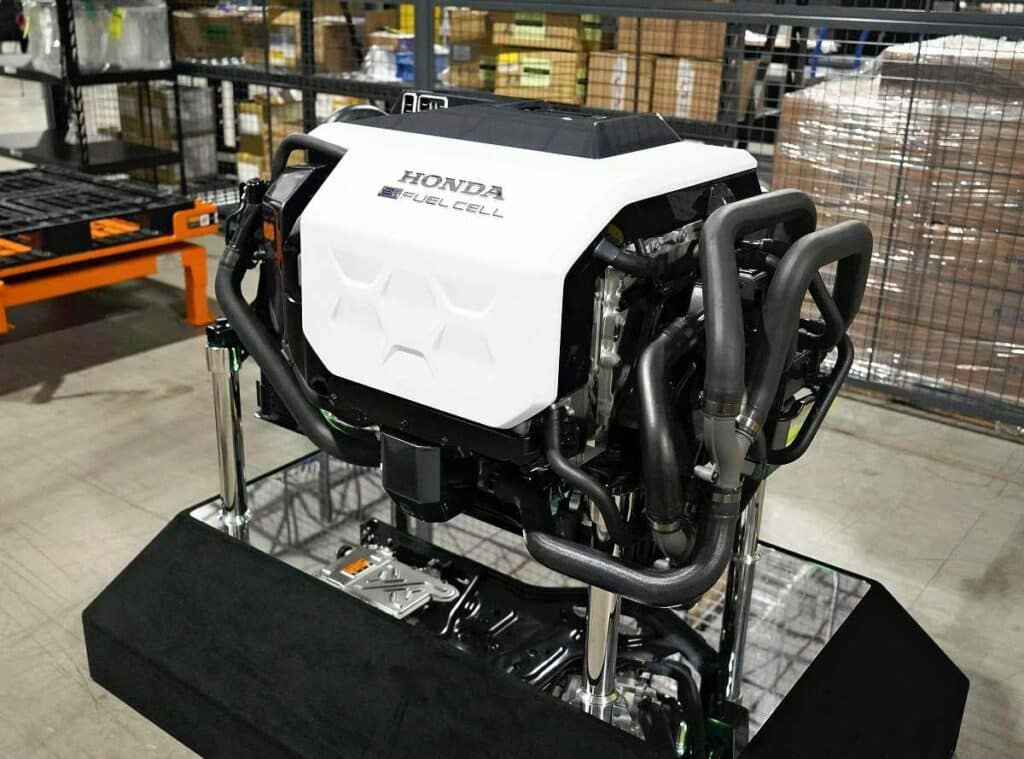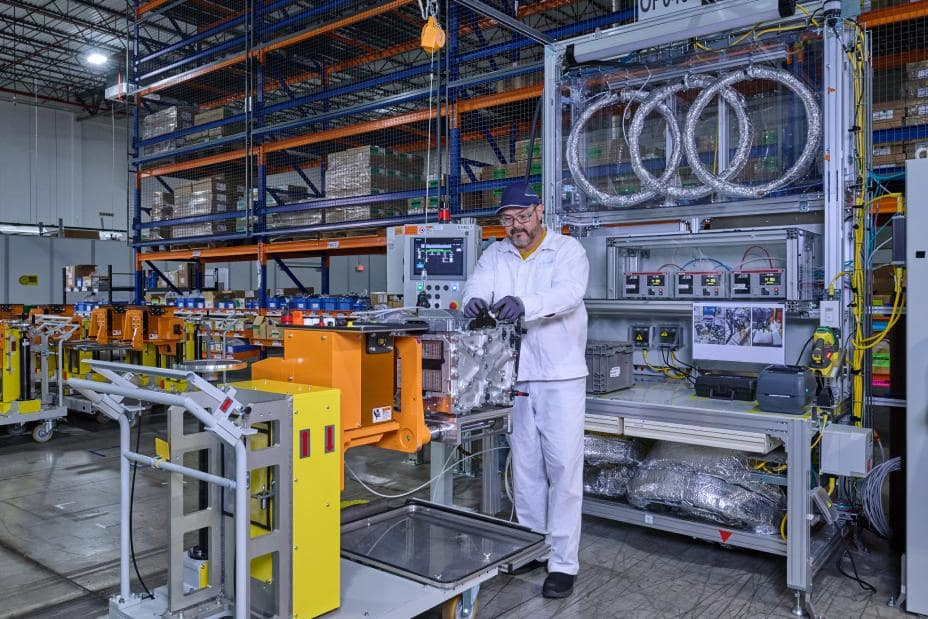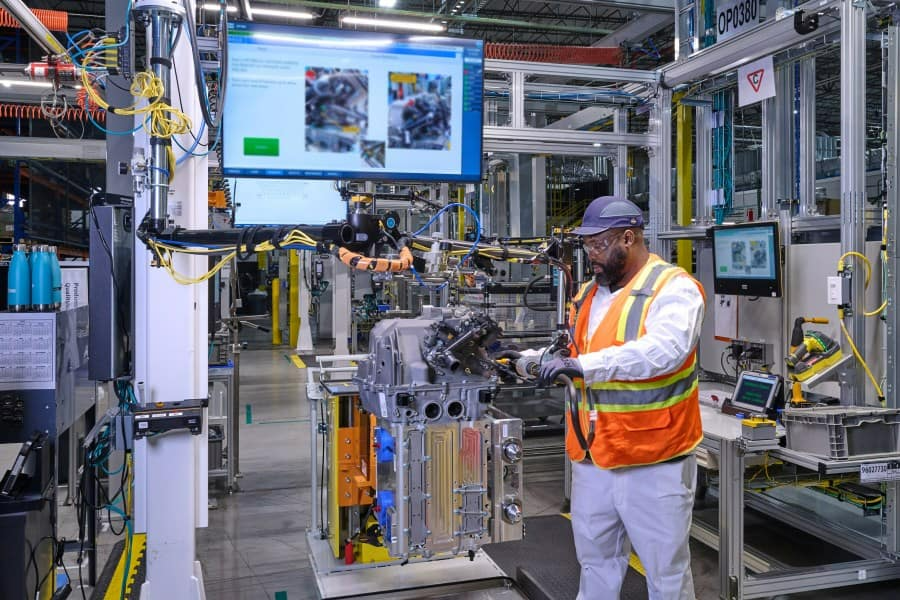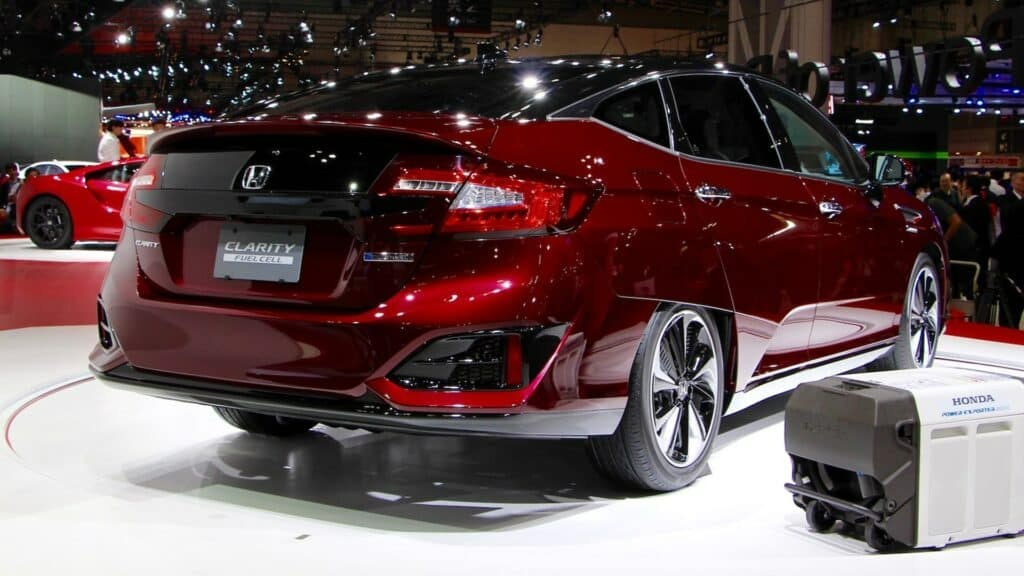Breaking new ground!
Excitement and historic precedent surrounds General Motors’ and Honda’s latest announcement — their joint venture on a hydrogen fuel cell facility in Michigan is poised to begin commercial production. In what is truly an historic day, the first full fuel cell system manufacturing joint venture to begin volume production of fuel cells for transportation and beyond has taken root. See how this momentous moment originated!
Here’s more…
The beginnings
It was in 2017 that General Motors and Honda put their heads together for this historical outcome, establishing the Fuel Cell System Manufacturing LLC, the first large-scale fuel system manufacturing facility, this one in Brownstown, Michigan. But their partnership on fuel cell system development dates back even further. In 2013, both shared the desire to improve the performance of fuel cell systems, with GM and Honda specifically aiming at fueling the durability of the 2019 Honda Clarity Fuel Cell. They also sought to reduce development and manufacturing costs, and their engineers surely delivered!
They began the process with raw materials for membrane and electrode all the way through to completed systems. And through ongoing investments — a combined $85 million to be exact —and stalwart commitment by both companies this initiative has moved forward, driving ongoing success at FCSM. Their drive aligns with FCSM’s mission of making high quality, durable and affordable hydrogen fuel cell systems for a wide range of applications and customers. In addition, they are creating jobs throughout these efforts, with about 80 expected, as well as producing hydrogen power solutions for diverse uses.
“We integrated the strengths of Honda and GM to create the most capable production system at this joint venture,” Tetsuo Suzuki, vice president of FCSM, said. “We brought a mass production mindset with attention to detail and a focus on high quality, and now we are ready to meet the needs of the customers for the future applications of fuel cell technology and the beginning of the hydrogen era.”
This is only the beginning.
A look ahead/their use
In expanding fuel cell applications down the line, the automakers are exploring applications in the rail industry, aircraft and commercial vehicles. Honda is also looking into hydrogen fuel cell uses with specific commercial vehicles like the heavy-duty trucking industry. Another potential application is stationary fuel cell power stations.
Being that hydrogen fuel cells can power larger vehicles, such as trains and semis, and in an emissions-free manner, they are a vital component of the Detroit automaker’s strategy in the area of electrification.
In other updates, back in December, plans in this area took huge steps forward. GM and Autocar signed a cooperative development agreement that would produce vocational cars that utilize GM’s Hydrotec hydrogen fuel cell power cubes. As a result of this partnership, Autocar,
which manufacturers trucks, will have access to key fuel cell technology that meets EPA regulations and customer requests. That same month, GM and Kmatsu, a global construction and mining equipment producer, unveiled plans to collaborate on creating and verifying technology for Komatsu’s upcoming 930 E electric drive mining truck. Fuel cells are also planned to be used for construction equipment, stationary power pants and commercial vehicles.
Among their benefits, they are not only twice as durable as previous designs but also flexible enough for multiple commercial applications. This collaboration has undoubtedly furthered research in this area as well as reduced research, development and manufacturing costs by joining their knowledge.
On top of their joint investment in the FCSM facility in 2017, grant funding of upwards of $2 million from the state government of Michigan served to further their goals. Since that time, Honda has announced the upcoming launch of a FCEV or fuel cell electric vehicle compact crossover that would compete against the Chevy Equinox EV in late 2022. GM also made their own announcement that their hydrogen fuel cell powertrain will be used in the crossover.
With improved operating characteristics at low temperatures, the new fuel cells are made with corrosion-resistant materials, all of which will serve to benefit their use in a variety of zero-emissions propulsion and energy management applications.
A joint venture with historic ramifications, the commercial production of hydrogen fuel cells is just one more way GM and Honda are breaking new ground. With numerous benefits and even more planned with future applications, the use of hydrogen fuel cells in commercial production is truly making history and breaking new ground!



